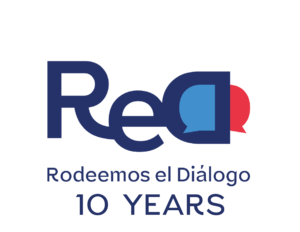Reincorporation Snapshot 8
Corporeconciliation and the Challenges of Reincorporation
In previous snapshots, we analysed the difficulties of reincorporation due to institutional barriers. This Snapshot brings together the challenges of political reincorporation related to the FARC party, taking into account the creation of new groups that seek to represent the interest of some former members of the FARC-EP guerrilla group.
Corporeconciliation: Broadening Participation and Decentralising Reincorporation
Last November, several former commanders and mid-level commanders, including Sonia (Anayibe Rojas Valderrama), Fabián Ramírez and Andrés París, created Corporeconcilation, an independent organization that is led by Sonia. According to its founders, it was created in response to government negligence and some of the FARC party’s oversights, especially in managing productive projects and demanding security guarantees from the government. It seeks to support the process of reincorporating more than 2,000 former guerrilla members who claim not to feel represented by the party.
Corporeconciliation is trying to open doors into the different entities involved in implementation, such as the National Council for Reincorporation (CNR) and the Commission for Follow-up, Promotion and Verification of Implementation (CSIVI). It also seeks to continue efforts to provide reparations to the victims by contributing to the clarification of the truth and by symbolic reparations through a monument in honor of the victims in Caquetá. Corporeconciliation did not emerge directly from the peace agreement and it is therefore not officially recognised by the Colombian government. But, the Presidential Advisor for Stabilisation and Consolidation, Emilio Archila, confirmed that government guarantees offered to former combatants under the agreement are not conditional on membership of the FARC party.
Another objective of Corporeconciliation is the decentralisation of productive projects within the reincorporation process. To date, these projects have mainly involved people in the ETCRs (Territorial Training and Reincorporation Spaces), where fewer than 30% of ex-combatants live. Most of them are instead living within 93 New Areas of Reincorporation (NAR), which are distributed across 17 different departments. The NARs do not yet have legal recognition by the national government and are in the process of applying for it. Groups of ex-combatants who consider that the FARC’s national cooperative, ECOMUN, has not met their expectations, have undertaken independent projects such as Cooagropaz, which brings together around 500 people dedicated to agricultural production in Neiva (Huila) and the Raíces Caribe (Carribean Roots) Corporation in Córdoba, which has more than 70 members.
Fragmentation: the Challenges of Reincorporation
In June 2020, the FARC party expelled some of its members. Through a majority vote, the party leadership decided that Fabián Ramírez, Andrés París, Pablo Atrato and Benedicto de Jesús González would no longer be part of this group “after making constant destructive criticisms and hindering the implementation of the Peace Agreement, seeking to generate divisions within the party”. This decision confirmed a problem that had been present for some time.
The party´s fragmentation in its first three years has exposed differences between its commanders, which come from the era of Jacobo Arenas and Manuel Marulanda Vélez. However, these differences were historically less evident because of the very structure of the former guerrilla, which was based on a vertical military command system, where discipline and obedience were necessary for survival. This is very different from civilian political life within a democracy, where the division of power and inclusion of different voices are fundamental. The divide in the party has made clear that some of the difficulties of transitioning from military to civilian life were not anticipated by the leadership, and also exposed the former FARC-EP as less cohesive than previously thought.
Despite the differences between the FARC party and Corporeconciliation, there is a common goal regarding recognition for different sectors of ex-combatants. The implementation of the Peace Agreement must be flexible enough to respond as conditions change.
The rupture of the FARC party presents several challenges for all sectors involved in the implementation of the Peace Agreement, including how to incorporate different voices within the reincorporation process. All ex-combatants who signed the peace agreement must have the necessary support to advance in their transition to civilian life, both in their productive projects and in the different moments of truth-telling and reparation.
Understanding former FARC-EP combatants as a diverse, heterogeneous group can help decentralise the reincorporation process, allowing independent organisations and settlements such as Corporeconciliation and the NAR to be formally recognised. It also enables the FARC party, Corporeconciliation and other “peace signatories”* to recognize the emergence of new groups, with different needs and perceptions, but who can be brought together through dialogue, for the successful implementation of the Peace Agreement.
Embrace Dialogue urges the Colombian government, state institutions, FARC party leadership and society more widely to recognise the complexity of the reintegration process, and so ensure the security, economic sustainability and social inclusion of all peace signatories.
*Former members of the guerrilla group FARC-EP who signed peace agreements in 2016 .


